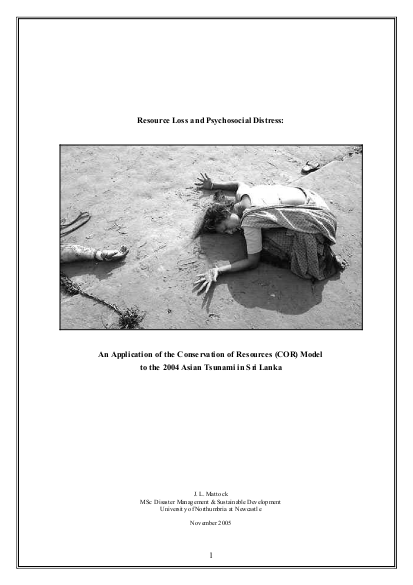
The relationship between disasters and resource loss, posited by Conservation of Resources (COR) theory (Hobfoll, 1989) as central to psychosocial distress, was explored in a qualitative assessment conducted 6 months after the 2004 Asian Tsunami in Sri Lanka. The sample constituted 92 tsunami-affected individuals from 6 districts primarily dwelling in temporary camps but also including several guesthouse owners. Methods of data collection included questionnaires, informal discussions, episodic narrative interviews, secondary sources and participant observation. Thematic-content and theoretical analyses revealed resource losses – particularly deaths of loved ones, loss of home and livelihood – to be strongly associated with psychosocial distress. Typical symptoms of distress included grief, loneliness, despondency, frustration, discouragement, anger and fear. Severity and prevalence of distress were found to broadly mirror the pattern of the tsunami (and therefore the pattern of resource losses), with the most severe and widespread reactions found in the worst affected district of Batticaloa, where the average respondent lost at least 6 members of their social network. Conversely, the more resource- endowed guesthouse owners were found to be less distressed, more motivated, confident and forward-looking than temporary camp residents, and more engaged in active-coping strategies.